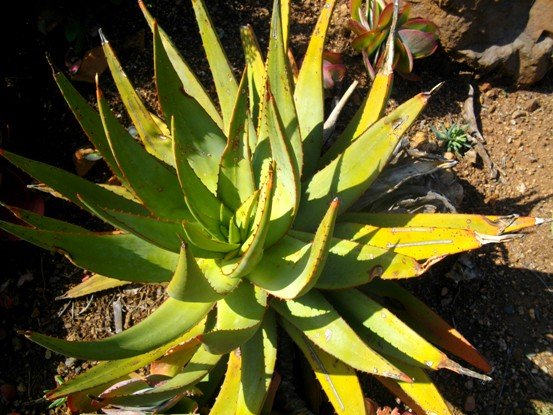Aloe vryheidensis

Author: Ivan Lätti
Photographer: Ivan Lätti
A. vryheidensis, commonly known in Afrikaans as the bruinaalwyn (brown aloe) and previously scientifically as A. dolomitica, is a stemless or short-stemmed plant that may form large colonies.
The leaf rosette is large, may comprise 50 live leaves in a single rosette, although plants with up to four basal branches do occur. The glaucous, grey green or pale green leaves become red tinted during dry winters. They spread, narrowly channelled with teethed margins and incurving tips that often display red, purple or brown tinges. Dead leaves persist on the upper stem part below the live leaves.
The inflorescence is always a single raceme although up to six of them may be produced in one season on the same rosette. The robust peduncle has many short, sterile bracts in the section below the flowers.
The flowers are sessile, opening in a short, sometimes skew band or ring of yellow or greenish yellow perianths encircling the stalk. This dense section of open flowers with stamens exserted far, moves up the raceme as lower flowers wither and more of them open at the top of the flowering section. The inner three stamens are exserted before the outer ones. A dark brown nectar is present. Flowering happens in late winter.
The species distribution is in the north of South Africa, in the Wolkberg and Strydpoortberge of Limpopo, near Barberton in Mpumalanga and near Vryheid in KwaZulu-Natal, as well as in eSwatini.
The habitat is grassy, mountainous areas and bushveld among dolomitic rocks (for which it was initially named) at elevations ranging from 900 m to 1800 m. This habitat is often shrouded in morning mist. The species is not considered threatened in habitat early in the twenty first century (Frandsen, 2017; Van Wyk and Smith, 2003; Reynolds, 1974; Jeppe, 1969; iNaturalist; http://redlist.sanbi.org).

